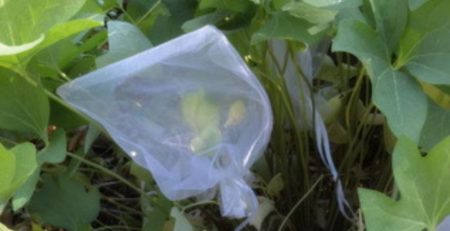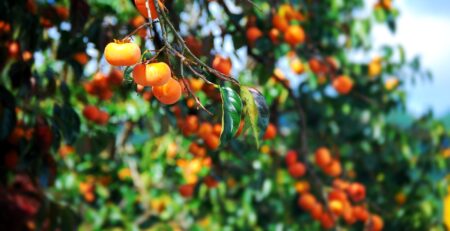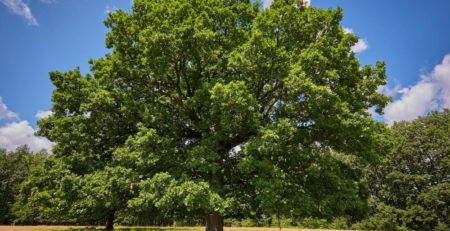Tree Diversity: Every Tree Has Its Day
Do you know what the United States’ National Tree (officially and unofficially) is?
You are right if you answered: the oak tree. The oak was designated by Congress and the President as the National Tree of the United States in 2004. Over 60 species of oak trees are growing in the United States and oak trees are found in every state.
At the top of the ‘Best Oaks to Plant’ list, you will find live oak and red oak. Yet we as Master Gardeners are now being asked to educate the public to stop planting these two species of oak trees. Why?
Master Gardeners are trained to select the right plant (or tree) for the right spot. I must confess that I planted a live oak, a large tree, in a medium spot in my front yard; and a red oak, 22 feet from power lines, in the back yard But that was more than 25 years before I became a Master Gardener. The lot size of most new homes in 2022 is inadequate to support a live oak or a red oak.
But size is not the #1 reason we need to now stop planting live oaks and red oaks. The #1 reason is these oak species are the top two victims of oak wilt, a deadly pathogen that has wiped out thousands of beautiful oaks in the Texas Hill Country.
Two of our favorite trees are being taken down by a fatal pathogen. When we over-plant any species, you can be sure they have moved to the most wanted list for both old and new pathogens and insects, e.g., Emerald Ash Borer.
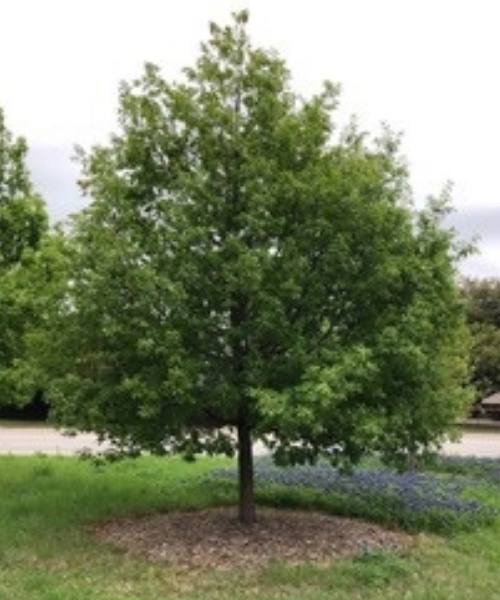
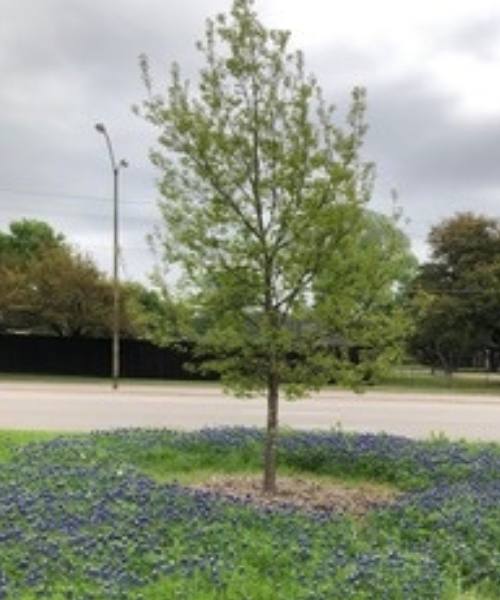

Raincatcher’s Garden (11001 Midway Road, Dallas, TX) is a Dallas County Master Gardeners research, education and demonstration garden. Back in 2015, the Master Gardener team there decided to conduct research by planting several alternative species of oaks that would better fit small lots and not be as susceptible to oak wilt. Since oak wilt seems to prefer the red oak family, and live oaks and red oaks are both in the red oak family, the team planted three small to medium-sized species in the white oak family:
- Chinquapin (Chinkapin) Oak – Quercus Muehlenbergii
- Mexican Monterrey White Oak – Quercus Polymorpha
- Lacey Oak – Quercus laceyi
All trees were purchased balled and burlapped (roots enclosed in a ball of soil with a burlap bag) with trunks 1.5 to 2.0 inches in diameter. They were planted 12 to 14 inches deep in black clay soil on top of a rocky Shell Strata and in full sun. All three species are drought-resistant.
Here are our observations and comments after six years:
- The Mexican Monterrey White Oak is the crown jewel of the group. It is semi-evergreen like a live oak but medium-sized (35-45 feet tall and 25-40 feet wide) so it works for smaller front yard lots. The leaves are 3 to 4 inches long, blue-green and leathery. The tree survived the 2021 Deep Freeze (-4 degrees F) in North Texas.
- Chinquapin (Chinkapin) Oak is a Texas Superstar that is deciduous and drought-tolerant. Growing to 50 feet tall and 40-50 feet wide, it’s a bit larger but an excellent choice in the right place in our home landscapes.
- We lost the first Lacey Oak we planted. The tree’s root system literally drowned from a lack of oxygen after heavy spring rains (4 to 6 inches) fell on top of the rock layer under 12 inches of But Lacey Oak is a beautiful small to medium-sized tree (20-30 feet tall and 20-25 feet wide) with moderate growth that is extremely drought resistant. Like all trees in the first year, watering is critical but, as we learned with our first try, Lacey Oaks will not tolerate wet soils.
We all love the live oaks and red oaks we have, but now it is our job as tree advocates to spread the word about good alternatives that are critical to our Urban Forest.
Eric Larner has been a Dallas County Master Gardener (DCMG) since 2006. Over the past 15 years, he has become a dedicated “Tree Talker” whose mantra is: “TREES ARE THE ANSWER.” Eric has served with many tree advocate organizations throughout the community. As a member of the DCMG Speakers Bureau, he enjoys talking with fellow citizens on a variety of tree topics including: Best Trees to Plant, How to Select and Plant Trees, Care and Maintenance of Trees, and The Many Benefits of Trees. Eric is currently conducting research and education on under-planted trees in the North Texas area at the DCMG Raincatcher’s Research, Education, and Demonstration Garden at 11001 Midway Road, Dallas, TX.





